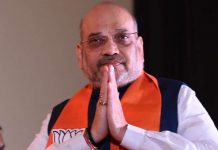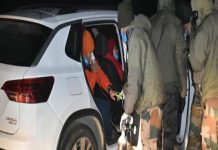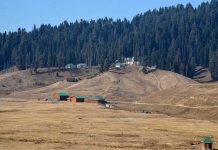ONE MILLION children — 20 per cent of the Valley’s total population — are growing up hearing such stories; narrating such stories. This generation has seen Kashmir only as a war zone. Children all over the world are living through conflicts — in Sierra Leone, Sarajevo, Bosnia, Iraq or earlier in Vietnam — and growing up confused. But unlike those battlegrounds, where United Nations agencies are able to assess the damage and provide relief to the children, in Kashmir there are but a few NGOs working in the field of mental health. The government has a relief committee but its role is limited to doling out Rs 1 lakh each to the affected families. Monetary aid is not what the children need. What they require is medical help to deal with problems like recurring nightmares, depression and, most of all, a sense of hopelessness. Most of all, they need help to understand that what they think is normal is actually something abnormal. “Kashmir’s social fabric is badly torn and needs urgent repair,” says Farooq Abdullah, Union minister and former chief minister.
The magnitude – in depth and breadth – is so vast, it needs more than just lip service. Listen to Ashfaq again. At 11, he gives you his own interpretation of words just as his younger friend, the six-yearold Shakib, likens the stone slab to his father’s tombstone.Mujahideen, Ashfaq says are those who train in Pakistan to kill the Indian military. The fauj, he says, are men in uniform who are not letting the militants attain the goal of azadi.
These are not mere stories. Listen to what Dr Mushtaq Margoob, one of the Valley’s leading psychiatrists, has to say. “Psychological disorders have hit Kashmiri society like an epidemic,” he says, adding, “While in 1980 only 14 percent suffered from depressive disorders, this figure shot up to 32 percent in 1989 and has now risen to almost 80 percent. According to Margoob: “The number of patients in the 20-25 age group is double that of any other group. It’s the age when children are shifting from the stage of dependence to independence. They are conscious of their problems and can articulate them.”
Mothers are no longer sending their sons to Pakistan with henna on their hands. Having rejected violence, they are now looking to ‘India’
There’s another alarming trend. Earlier his patients use to tell Margoob that they would have committed suicide if not for the fact that their faith did not allow it. But a study conducted by the doctor revealed that of the 23 suicide attempts reported in the general hospital’s psychiatric clinic, the majority belonged to the younger age group. Another well-known psychologist, Dr Arshad Hussain, quotes a study to say, “As a predominantly Muslim society, Kashmir had the lowest suicide rate but that has now changed. On an average, 3.5 persons report to the SMHS hospital’s casualty ward with suicidal behaviour every day. Of the people who contemplate suicide, most are males aged between 25 and 35 and most of those who attempt suicide are females.”

Twenty prolonged years of violence have impacted Kashmiri women the most. They have borne the brunt of violent loss and are caught in the middle of Kashmir’s psychological legacy. Each of the 70,000 deaths – the official toll for the last 20 years – has left women without husbands or sons. Forced to bear the burden of running homes, they have also become patients. And according to Margoob, “The number of patients seeking mental health services has grown dramatically from 1,700 in the early days of the insurgency to more than 100,000 now. Women are a majority because they are biologically and psychologically prone.” Margoob points to another disturbing trend — women are hooked to opiates, available over the counter at pharmacies.
Parveena Ahanger is probably among the few who is not hooked to opiates. She has come to symbolise the face of mothers who are still hoping their sons will return home even though they went missing in the early 90s. Parveena’s son Javed disappeared in 1990 and for 19 years she has been waging a silent, poignant battle – sitting in Srinagar’s Iqbal Park, near the city’s main square, once a month, to draw attention to their plight. Ask her if she sometimes feels it’s a futile struggle and she says, “I’ve given up on all my relationships. I can’t give up on my son.” Last month, she lost a friend who was a member of the Association of Parents for Disappeared Persons (APDP). The only promise the friend extracted from her before she died was this: Don’t give up the search for my son. The search that continues even after 19 long years has for Parveena been marked mostly by political betrayal. Hear it in her own words, “During Governor’s rule, nobody listened. In 1996 when Farooq Abdullah became chief minister, he promised to look into it but nothing happened. Six years later, Mufti Mohammad Sayeed said vote for me and it will be the first case I take up. When Ghulam Nabi Azad became chief minister he said the case was too old and my son had not disappeared during his tenure. Now, we have spoken once again to Omar Abdullah’s home minister, but we are still waiting…”













